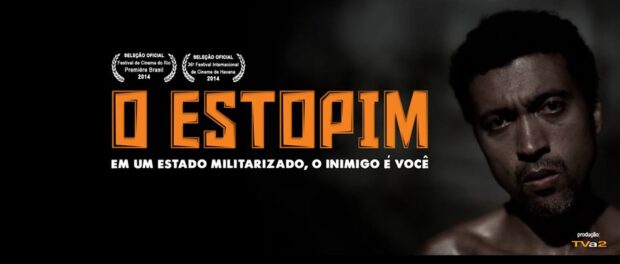
The case of Amarildo de Souza, the bricklayer who was tortured to death by the Military Police in Rocinha in 2013, made waves across Brazil and abroad. His death became a symbol of police repression in a country where thousands are killed by police every year.
The title of Rodrigo Mac Niven’s documentary about Amarildo, O Estopim (The Trigger) reflects this. In many ways, Amarildo’s story, and the campaign for justice after details of his case came to light, was a “trigger” in changing attitudes towards the pacification process implemented in Rio’s favelas since 2008.
The Trigger premiered at the Rio Film Festival in 2014. During a public screening held by Viva Favela, Mac Niven and cinematographer Neto de Oliveira spoke about the film-making process.
“What happened during the torture, no one knows, except the torturers themselves.” – Rodrigo Mac Niven
Those who followed the Where Is Amarildo? (Cadê Amarildo?) campaign are familiar with Amarildo’s photo, shared widely in the media. But beyond this, there are few concrete records of his life. Consequently, The Trigger mixes documentary footage with fictional sequences, in which Amarildo is played by Bruno Rodrigues.
However, The Trigger‘s main focus is Amarildo’s friend Duda, who recounts his own experiences of police intimidation and violence in Rocinha. “I grew up being beaten by the police,” he says. The focus on Duda came out of the director’s desire not to exploit Amarildo’s widow, Bete, and his family, who have been the subject of intense media attention. But, as Mac Niven clarified: “Obviously the family had to be present. So we used Bete’s testimony. We chose to show the family through their struggle.” In the film, Bete explains her decision to speak out when her husband disappeared: “Then I said, wait right there: I’m going to start to open my mouth.”
Mac Niven makes use of the little that was known about Amarildo, including his passion for fishing and his physical strength, which explains his nickname ‘Ox’ (Boi). But he is often shown from far away, even filmed by drone. “When Amarildo appears in the story he’s always distant, we don’t see his face well,” said Mac Niven. “It makes us think: ‘Who is this person?’ But during the torture he appears to the world. In the torture scene we bring the camera right up to his face.” The result is that the brutal and graphic torture sequence almost includes the audience in the scene.
Audience implication was important for Mac Niven, who intended the film to be about more than just the story of one man, but about police repression that affects all Brazilians. “In a militarized state, you are the enemy,” he said. The film shows cases of police repression outside favelas, such as during the military dictatorship and, more recently, during popular protests in 2013. But the audience is reminded that police violence in other contexts like those 2013 protests receives much more media attention than is given to day to day police violence in favelas.
The Trigger questions attempts by the media and politicians to label Amarildo as a drug trafficker after his disappearance, a type of “criminalization of the victim” that helps to justify police violence. “The ‘figure’ of the trafficker somehow serves as a justification for taking someone from his house and into the Pacifying Police Unit (UPP) headquarters, torturing him, killing him, hiding his body and lying about what happened,” said Mac Niven.
Although the film highlights the strength of Amarildo’s family, friends and supporters and their campaign for justice, The Trigger makes for difficult watching. The seriousness of the subject is reflected in the cinematography. Neto de Oliveira, cinematographer, commented on the “desaturated” imagery. “We didn’t want a colorful film,” he said, adding that the cloudy, rainy weather in Rocinha during the filming helped them achieve this.
Mac Niven explained he aimed to “show how Amarildo’s story is more than just a story about Amarildo” and Bete’s interview corroborates this, mentioning the many other “Amarildos” killed in Brazil each year. But the film never forgets the person who was the “trigger” for the film: the bricklayer, the ‘Ox,’ the father, the favela resident. In Duda’s words: “They did such an evil thing to such a good person.”
25 Military Police officers were found to be involved in Amarildo’s death and disappearance, four of whom are currently in prison, including the ex-commander of Rocinha’s Pacification Unit, Major Edson Santos. Amarildo’s body has never been found.



